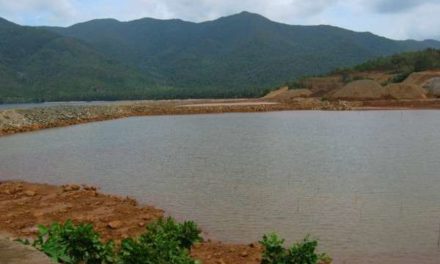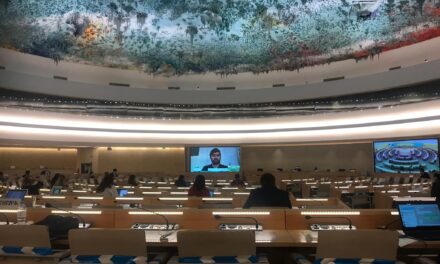Walden Bello
Perhaps an even bigger surprise than the collapse of the economies of Southeast Asia has been the implosion of the Korean economy. The coming of the IMF has only triggered an even greater loss of confidence with the nation’s currency, the won, dropping even more relative to the dollar and the Seoul stockmarket plunging to near its low for the year after the inking of a rescue agreement with the Fund in the first week of December.
How could one of Asia’s strongest economies unravel so fast? Even as the economies of Southeast Asia were collapsing in dramatic fashion over the summer, things were building up to a climax in Korea, where over the last year, seven of the country’s mighty chaebol or conglomerates had come crashing down. The dynamics of the fall in Korea were, however, distinct from that in Southeast Asia.
The Korean Path
Unlike the Southeast Asian economies, Korea, the classical “NIC” or newly industrialising country, had blazed a path to industrial strength that was based principally on domestic savings, carried out partly through equity enhancing policies such as land reform in the early 1950s. Foreign capital had played an important part, no doubt, but local financial resources extracted through a rigorous system of taxation plus profits derived from the sale of goods to a protected domestic market and to foreign markets opened up by an aggressive mercantilist strategy constituted the main source of capital accumulation.
The institutional framework for high-speed industrialisation was a close working relationship between the private sector and the state, with the latter in a commanding role. By picking winners, providing them subsidised credit through a government-directed banking system, and protecting them from competition from transnationals in the domestic market, the state nurtured industrial conglomerates that it later pushed out into the international market.
In the early 1980s, the state-chaebol combine appeared to be unstoppable in international markets, as the deep pockets of commercial banks that were extremely responsive to government wishes provided the wherewithal for Hyundai, Samsung, LG and other conglomerates to carve out market shares in Europe, Asia, and North America. The good years were from 1985 to 1990, when profitability was roughly indicated by the surpluses that the country racked up in its international trade account.
The Squeeze
In the early nineties, however, the tide turned against the Koreans. Two factors, in particular, appear to be central. The first was the failure to invest significantly in research and development. The second was the massive trade blitz visited on Korea by the United States.
On the one hand, failure to invest significantly in research and development during the 1980’s translated into continuing heavy dependence on Japan for basic machinery, manufacturing inputs, and technology, resulting in a worsening trade deficit with that country.
Government spending on R&D in the late 1980s came to only 0.4 per cent of GNP, and changes needed to reform the country’s educational structure to mass produce a more technically proficient work force were never implemented. By the end of the decade, there were only 32 engineers per 10,000 workers in Korea, compared to 240 in Japan and 160 in the United States.
As for management, it took the easy way out, with many firms choosing to continue to compete on the basis of low-cost unskilled or semi-skilled labor by moving many of their operations to Southeast Asia. Instead of pouring money into R&D to turn out high-value-added commodities and develop more sophisticated production technologies, Korea’s conglomerates went for the quick and easy route to profits, buying up real estate or pouring money into stock market speculation. In the 1980s, over $16.5 billion in chaebol funds went into buying land for speculation and setting up luxury hotels. In fact, as of the early 1990s, a single US corporation, IBM, was investing much more on R&D than all Korean corporations combined!
Not surprisingly, most of the machines in industrial plants continue to be imported from Japan, and Korean-assembled products from colour televisions to laptop computers continue to be made up mainly of Japanese components. For all intents and purposes, Korea has not been able to graduate from its status as a labor-intensive assembly point for Japanese inputs using Japanese technology. Predictably, the result has been a massive trade deficit with Japan, which came to over $15 billion in 1996.
As Korea’s balance of trade with Japan was worsening, so was its trade account with the United States. Fearing the emergence of another Japan with whom it would constantly be in deficit, Washington subjected Seoul to a broad-front trade offensive that was much tougher than the one directed at Japan, probably owing to Korea’s lack of retaliatory capacity. Among other things, the US:
- hit Korean television manufacturers with anti-dumping suits;
- forced Korea to adopt “voluntary export restraints” on a number of products,
- including textile, garments, and steel;
- forced the appreciation of the won, the Korean currency, relative to the dollar by 40 per cent between 1986 and 1989 to make Korean goods more expensive to American consumers, thus dampening demand for them;
- knocked Korea off the list of countries eligible for inclusion in the General System of Preferences (GSP), which grants preferential tariffs to products from Third World countries in order to assist their development;
- threatened Korea with sanctions for a whole host of alleged offences, ranging from violation of intellectual property rights to discriminatory tax treatment against large-engine US car imports, under the Special 301 and Super 301 clauses of the 1988 US Trade Act, which mandates to the US executive to take retaliatory action against countries that are adjudged unfair traders or are seen as abetting the violations of the intellectual property rights of US corporations;
- forced Korea to open up its markets to US tobacco products and to increase imports of beef and rice;
- forced Seoul to open an estimated 98 per cent of industrial areas and 32 per cent of service areas to foreign equity investments and stepped up the pressure for liberalization in telecommunications, maritime services, banking, government procurement, and many other areas.
Hemmed in on all fronts, Korea saw its 1987 trade surplus of $9.6 billion with the US turn into a deficit of $159 million in 1992. By 1996, the deficit with the US had grown to over $10 billion, and its overall trade deficit hit $21 billion.
Desperation Move
In a desperate attempt to regain profitability, management tried to ram through Parliament last December a series of laws that would have given it significantly expanded rights to fire labor and reduce the work force, along the lines of a US-style reform of sloughing off “excess labor” and making the surviving work force more productive.
This was essentially a return of the formula of the early years of the miracle when the “primitive accumulation†of capital was derived from the harsh exploitation of unskilled labour. When this failed owing to fierce street opposition from workers, many chaebol had no choice but to fall back on their longstanding symbiotic relationship with the government and the banks, this time to draw ever greater amounts of funds to keep money-losing operations alive.
The lifeline could not, however, be maintained without the banks themselves being run to the ground. By October, it was estimated that non-performing loans by Korean enterprises had escalated to over $50 billion. As this surfaced, foreign banks, which already had about $200 billion worth of investments and loans in Korea, became reluctant to release new funds to Seoul. By late November, on the eve of the APEC summit in Vancouver, Seoul, saddled with having to repay some $72 billion out of a total foreign debt of $110 billion within one year, joined Thailand and Indonesia on the IMF queue.
The Korean government was able to get a commitment of $57 billion to bail out the economy, but only on condition that it would not only undertake a harsh stabilisation program but also do away with the key institutions and practices that had propelled the country into “tigerhood.” The miracle was over.









